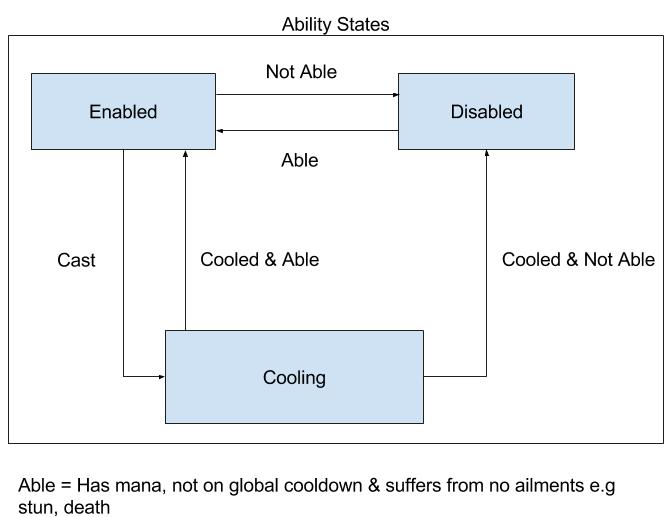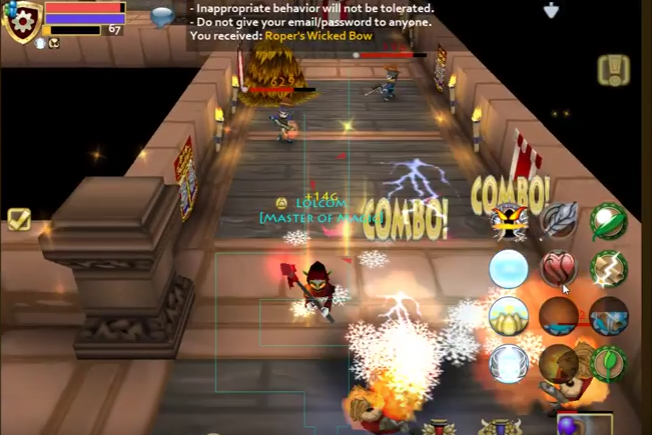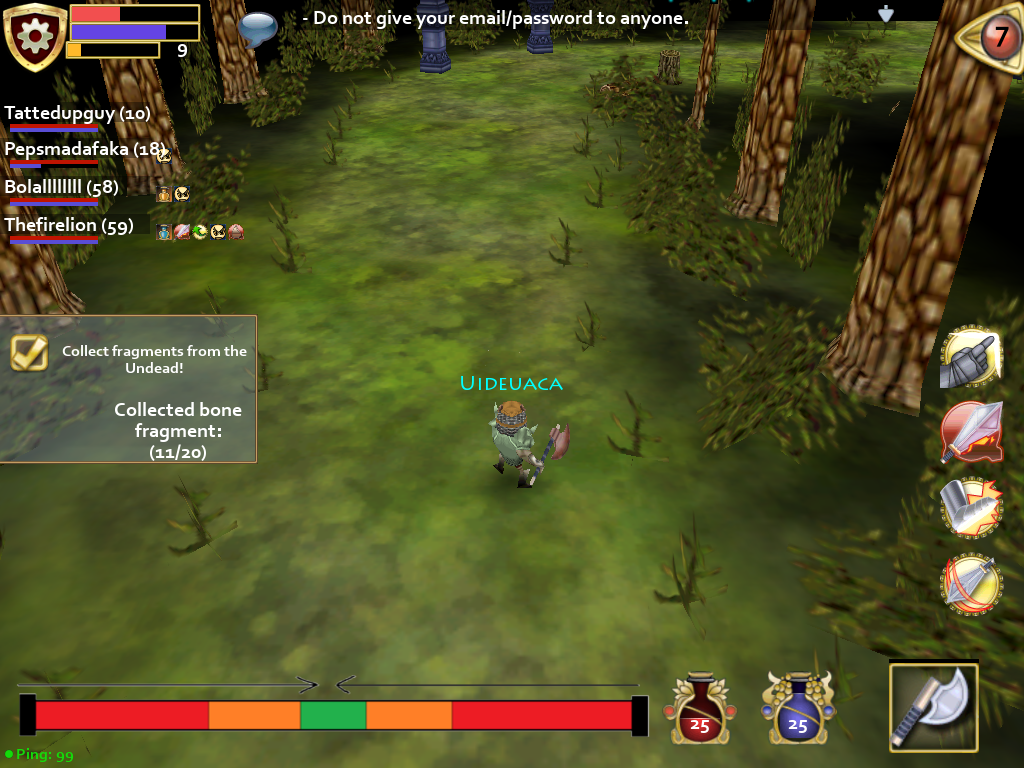Pocket legends is a multi-platform mobile massively multiplayer online game where players play with a variety of classes which have unique abilities. For this exercise I will be analyzing the ability system in Pocket Legends with a focus on the player vs environment (PvE) tank system for the warrior class.
Classes
In Pocket Legends each class has a role they perform, one such class is the warrior which suits the role of ‘protector’. During gameplay the warrior attracts the attention of enemies, and takes the majority of incoming damage. This role is referred to as being a ‘tank’.

To enact the role of tank, the warrior has an ability system. A tank that is unable to hold the attention of enemies will most likely result in the death of the party. This causes dissatisfaction with the game, which leads to lower player retention. It is therefore important that this system functions well.
Abilities
The fundamental building blocks of the ability system are the abilities. Warriors have unique abilities they can perform such as Vengeful Slash which has usage requirements, and effects when used. These usage requirements are mana, cooldown, and player level which are the primary variables that control this system.

When an ability is enabled it can be cast, and when cast goes into a ‘cooling’ time period. When cooling the ability cannot be used until the cooling period is over. Once the ability has cooled down, the player is able to cast it again. This process repeats as long as the player is able to cast the ability. Disabled abilities cannot be used at all due not meeting usage requirements such as lack of mana, character being dead etc.

We can represent this loop with the following diagram.

Ability Meta Structure
Players see their abilities through a customizable overlay of buttons. Casting an ability from the overlay results in a short global cooldown. Abilities then move into their own local cooldowns if they have been cast.
A warrior’s abilities come together to give the player a toolset to perform their ideal role. The following is a table of the warrior’s abilities and effects.

From the above we can observe that a tanks abilities fall under three primary categories:
- Crowd control
- Self-enhancements (buffs)
- Area of effect weakening (debuffs)
These categories of abilities focus, and control the attention of enemies (crowd control). Strengthen the tank to be able to reduce incoming damage (buff), and then weaken enemies to allow for damage dealing classes to more easily kill the tanks enemies.
This design forms the basis of a classic tank ability system. It is fun due to a simple clean interface which gives immediate, and satisfying forms of feedback, and interesting to use as players are presented the dynamic problem of effectively tanking through situations given their ability toolset.
Ability Combos
The ability system has ‘combos’ which occur when certain abilities are cast together or are cast with abilities from different classes. For example, warriors can combine the Stomp and Beckon abilities to trigger the ability combo Smash.

In designing these abilities there is both elements of discovery, and skill.
- Discovery – Players experimenting, and finding that certain combinations of abilities produce a combo reward.
- Skill – Knowing when to use combos by oneself or with other players.
These factors give greater depth, and enjoyment in using the ability system.
An Addition
Currently Pocket Legends ability system has the player casting an ability, waiting for it to cool, then recasting. This system does have additional depth with combos, but there is no risk and reward in the process of casting. I believe risk-reward is an important component of a good combat system, therefore I propose a change to the casting mechanism.
Risk-Reward
When casting an ability, a ‘time bar’ bonus event would appear. The bar would have two sliders on opposite ends that would move towards the center of the screen. The player would need to tap at the right time (green) to receive a bonus to their attack, but tapping at the incorrect time would result in a negative effect (red) or no benefit at all (orange).
Development of this mechanic could include greater interaction between abilities, such as an ability to increase the optimal area of the time bar.

Considerations for this mechanic in a mobile environment should include:
- Accessibility to casual players
- Minimal number of taps

The intended effect of this change on gameplay is to introduce a skill based risk versus reward mechanism to break the repetitive nature of ability casting.
With this change there are three primary risks/consequences:
- The change may detrimentally slowdown gameplay. Perhaps to mitigate this not all abilities have this option, or the time bar is introduced at random times to keep player in anticipation for a bonus event.
- The added complexity might not appeal to casual players.
- How would this mechanic fit into the current difficulty curve of the game? Would it cause imbalances?
Playtesting with experienced, and new players would be necessary to determine the effect of each of these changes, and how to go about improving it.